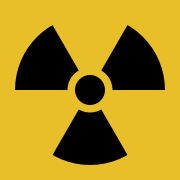Uranium smugglers arrested in Slovakia and Hungary
Sunday, December 2, 2007

Three men were arrested Wednesday following a police raid in Slovakia near the Hungarian border. A Ukrainian citizen and two Hungarians were arrested while trying to sell nearly half a kilogram of enriched uranium, Slovak police said.
The 481.4 grams of powdered material seized were examined by experts who determined that it was comprised of the fissile isotope uranium-235 and the common isotope uranium-238. Uranium-238 is the most abundant naturally occurring form of uranium while uranium-235 occurs naturally at approximately 0.72%. Authorities revealed preliminary results that suggest the material recovered contained 98.6% uranium-235. Uranium is considered to be weapons-grade when the uranium-235 content is at a minimum of 85%.
Photographs of the radioactivity measurements taken by police were shown to nuclear experts who have suggested that the uranium recovered was not likely as dangerous as authorities believe. Former UN weapons inspector David Albright downplayed the effectiveness of uranium-235 for use in a "dirty bomb". "Uranium is not very radiotoxic," said Albright. "The net effect of dispersing half a kilo of uranium -- who cares? Each person would get so little it would have no effect."
Slovak police official Michal Kopčík suggested, however, that the uranium recovered would have been useful in preparing a dirty bomb. "The radioactive uranium was even more dangerous because it was in powder form," said Kopčík at a news conference following the arrests. "It was possible to use it in various ways for terrorist attacks."
The investigation and surveillance of the suspects had reportedly been going on for months. "Police were watching the sellers as well as the buyers," said Kopčík, although the identity of the buyers was not revealed.
Police said the material originated from an unspecified location in the former Soviet Union.
Sources
- William J. Cole, AP. "Arrests reveal nuke black market" — London Free Press, November 30, 2007
- "Gang arrested trying to sell enriched uranium" — Times Online, November 29, 2007
- "Slovak raid nets 'bomb' uranium" — BBC News Online, November 29, 2007
- "Zaistený urán mohli zneužiť teroristi" — SME.sk, November 29, 2007 (Slovak)

